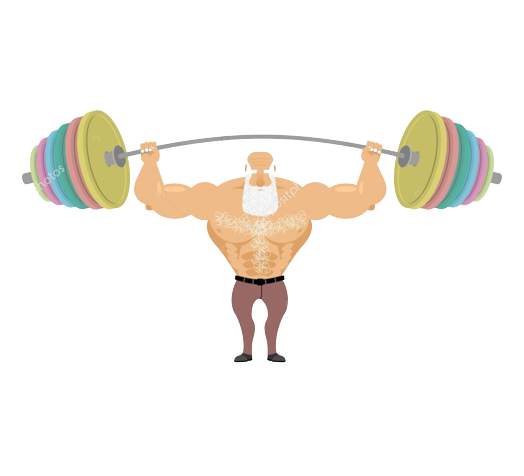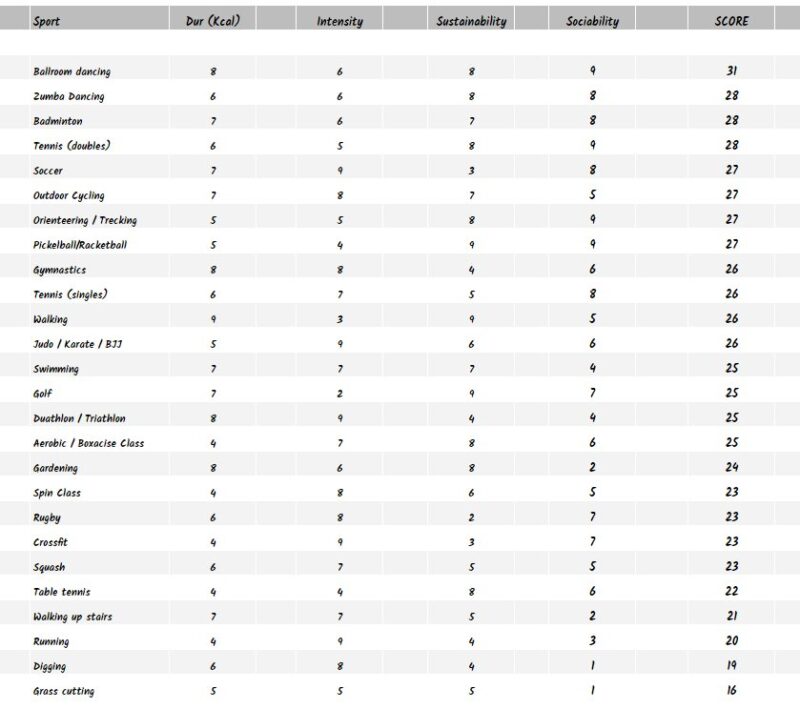There is no doubt exercise is good for you. A meta-analysis (📎citation) of over one million people found a 24% reduction in all-cause mortality between the least and most intensive physical activity groups. Similarly, the UK Biobank study followed half a million participants and found being physically active at 45 years was associated 7 additional “survival” years in those with chronic illness (📎 citation). In fact recent data suggests physical activity helps to preserve telomere length. In the study by Cherkas 2008 (📎citation), those who were less physically active during their leisure time were shown to have shorter telomere lengths relative to subjects performing regular exercise, with a difference approximating to 10 added years.
Survival of Professional Athletes

In a recent blog we found 24x studies (📎LINK) that showed athletes lived longer (49% risk reduction) and had a reduced incidence of both CVD and cancer mortality than non-athletes.
Lemez and Baker (2015) found that Basketball players, NFL players cyclists , NBA players, and golfers had the most robust evidence of greater longevity.
Runacres and colleagues rexamined outcomes in 165,000 athletes (📎citation). Athletes lived significantly longer than the general population (male SMR 0.69female SMR 0.51). There was no survival benefit for male power athletes compared to the general population
From these studies the typical longevity benefits for marathon runners was +4 years, Tour de France cyclists + 8 years and Olympians involved in endurance sports + 6 years. But as these are all based on elite athletes, I want to know if this effect is there in regular people doing regular sports….and further which sport comes out on top?
A Caution About Intensity
Although I have previously tried to debunk the J-shaped survival curve , I do agree that really tough sports like Marathon Running are likely not optimal (for longevity). *Not* I repeat because of a J-shaped survival curve (because if you can do them, you will benefit) rather because these sports are too hard to maintain in later life. OK some manage it, but let us be honest, most give up after their junior years; so it remains possible that maybe golf, or table tennis will beat crossfit in the long term….after all you get a progressive survival benefit the more steps per day you do (as shown in this 2022 study, replicating the old 2014 Harvard Alumni study).

Another way to simplify this blog is to help me find which sport gives you most (additional) steps over a lifetime…and not necessarily the most steps this year.
Before going too deep into this, let’s kick off with this question, “what is exercise?”
What is Exercise?
Exercise could mean simply mowing the grass or it could be running 800m at the olympics. Exercise essentially is “activity” which is physically tough, if you want to be precise, let’s say one which raises the heart rate to 50% of Heart Rate Reserve (HRR = HRmax — HRresting). And if its organized, and with rules, we call this a “sport”.
Now sports themselves radically differ from easy to ridiculously hard. But they also differ in some other key ways which become important in the long term, namely:
“Sustainability” = how hard they are to keep doing them long term
“Sociability”= how much they involve group participation.
It turns out these factors are key for determining the long term health benefits of sports. Look at it like this: you could take up Rugby at the age of 20. Great! You will get a lot of physical benefits and the added value of the team culture. But how long will you continue? 35? 45? With such a tough high impact sport, almost no one plays beyond 35. So maybe you gained 15 years of benefit but once you gave up or got injured, you lost out on all subsequent years, or to say this a different way, you got 10 years of benefit but 50 years of “effective deterioration” in retirement. Sure, you can start something else however I am trying to asses the benefit of participating in that ONE sport relative to others. So if you compare sport participation over a lifespan it might look like this.

Right, now it is time to dig into the data of what the research says on this topic.
Participation in Which Sport is Optimal?

Oja et al (2016) (📎citation) was one of the first to look at this in a large sample of 80 306 British adults. Significant reductions in all-cause mortality were observed for participation in cycling (HR=0.85, 95% CI 0.76 to 0.95), swimming (HR=0.72, 95% CI 0.65 to 0.80), racquet sports (HR=0.53, 95% CI 0.40 to 0.69) and aerobics (HR=0.73, 95% CI 0.63 to 0.85). No significant associations were found for participation in football and running
Results from the 25 year Copenhagen City Heart Study (CCHS) in Mayo Clinic Proceedings after tracking more than 8,500 people, they found that these sports and activities increased life expectancy for active participants the most compared to sedentary peers:
Tennis: 9.7 years
Badminton: 6.2 years
Soccer: 4.7 years
Cycling: 3.7 years
Swimming: 3.4 years
Jogging: 3.2 years
Calisthenics: 3.1 years
Sheeham and Li (2020) (📎citation) followed 26,727 American adults in the National Health Interview Survey from 1998 for 17 years. The best exercise in terms of a unique contribution was vollyball, followed by aerobics and running. They also looked at participation. Walking (48%) and stretching (30%) were popular followed by weight lifting (17%), cycling (14%) and running (12%) but sadly most other sports had lower engagement.
Watts and colleagues (2022) followed quarter million elderly people in the National Institutes of Health “AARP Diet and Health Study” for 15 years. In this study the optimal sports were: running (HazardRatio = 0.85), racket sports (HR = 0.84) then walking, golf, aerobics, swimming and cycling. (citation).
In the Malmö Diet and Cancer Study cohort (📎citation) Bergwall and colleagues (2021) looked at 25,876 people with 21 years follow up. In terms of cardiovascular mortality, the top sports were orienteering, running, tennis, golf, and dancing. Also individuals who reported that they had stopped at the five-year follow-up still had a lower risk than those who had never participated in physical activities but the lowest risk was observed for those who were categorised in the ‘continued’ group at the five-year follow-up, meaning that continuing your chosen activity into later life is the gold standard.
One activity that is confusing in itse benefits or hazards is gym strength training. A new meta-analysis from Momma and colleagues (2022) examined 16x individual studies (📎citation). Overall muscle-strengthening activities were associated with a 15% lower risk of all-cause mortality. But there was a catch. For this sport, a J-shaped association was found between muscle-strengthening activities and all-cause mortality, CVD and total cancer, with the maximum risk reduction (approximately 10–20%) at approximately 30–60 min/week of muscle-strengthening activities.
Bringing The Story Together: A League Table!
Historically humans lived in tight-knit social hunter-gather groups where all people looked out for one another. Modern society has given us a different, very inferior model in which we outsource care for the vulnerable and elderly to care facilities and nursing homes where anonymous professionals are paid to look after our relatives. As many as 70% of the elderly need care, and although many families help, the proportion of families that do help appears to be falling (📎citation). The bottom line is we are increasingly isolated, especially in later years and this is strongly linked with higher mortality. Data from 27x studies involving 1.30 million individuals shows that social isolation increases all-cause mortality by 33%! Risk is higher in men than women and in younger than older individuals.
This is why social sport such as dancing, badminton, soccer, golf, softball, basketball and tennis are usually superior to activity completed alone including swimming, cycling and jogging over the long term [📎19, 47, 69, 73]. Social sport also help maintain motivation especially outdoor [📎citation 72].
With this in mind I made this league table of most helpful sports that promote longevity:

As you see, top are dancing | badminton/tennis | soccer | cycling | trekking / Fell-walking . At the bottom are running, table-tennis, squash, crossfit and Rugby.
My take home is that: starting any sport is good, but continuing a sport long-term (ideally life-long) is the golden ticket. You don’t have to stick in your lane…..you can of course mix up any combination, learn new skills, and meet new people by learning a new sport every few years!
